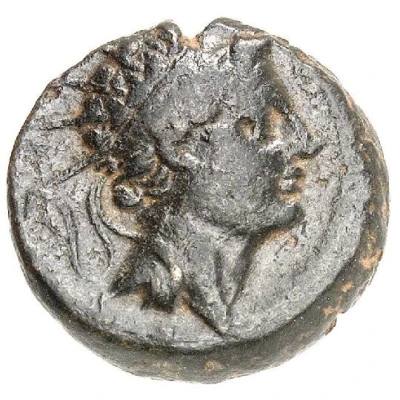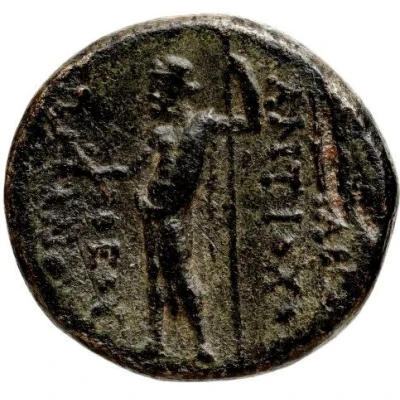


© Paul-Francis Jacquier
Dichalkon - Antiochos IV 173 BC - 168 BC
| Bronze | 6.5 g | 18 mm |
| Issuer | Seleucid Empire (Seleucid Empire (305 BC - 64 BC)) |
|---|---|
| King | Antiochos IV Epiphanes (175 BC - 163 BC) |
| Type | Standard circulation coin |
| Years | 173 BC - 168 BC |
| Value | Dichalkon (1⁄24) |
| Currency | Drachm |
| Composition | Bronze |
| Weight | 6.5 g |
| Diameter | 18 mm |
| Shape | Round |
| Technique | Hammered |
| Orientation | Variable alignment ↺ |
| Demonetized | Yes |
| Updated | 2024-10-10 |
| Numista | N#426993 |
|---|---|
| Rarity index | 97% |
Reverse
Zeus seated left on high-backed throne, holding phiale and scepter.
Script: Greek
Lettering:
BAΣΙΛΕΩΣ
ANTIOXΟΥ
ΘEOY
EΠIΦANOYΣ
Translation: King Antiochos (IV) Theos Epiphanes
Interesting fact
One interesting fact about the Dichalkon coin of Antiochos IV from the Seleucid Empire is that it features a unique blend of Greek and Persian design elements. The obverse side of the coin depicts the king's portrait, while the reverse side shows a seated Apollo, a common deity in Greek mythology, but with a distinctly Persian-style throne and decorations. This fusion of cultural influences reflects the multicultural nature of the Seleucid Empire, which spanned across much of the ancient Near East and brought together diverse peoples and traditions.



